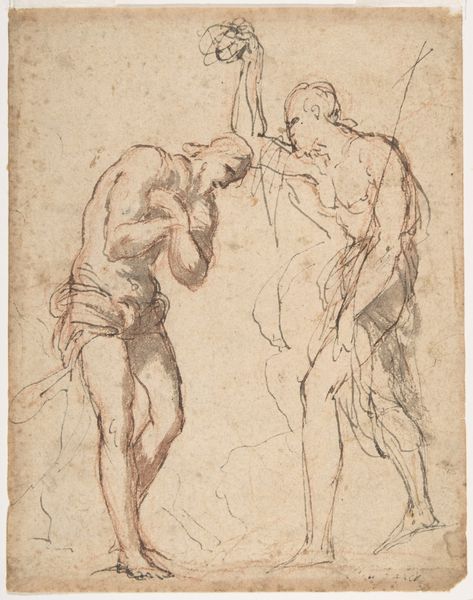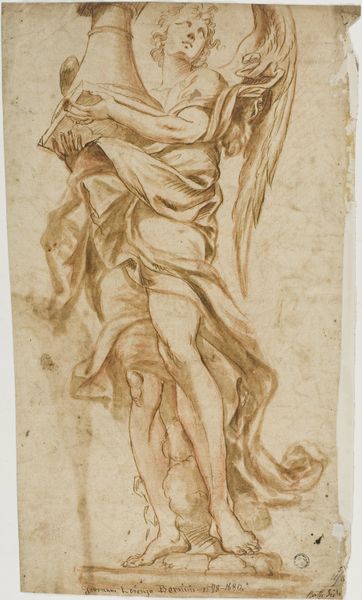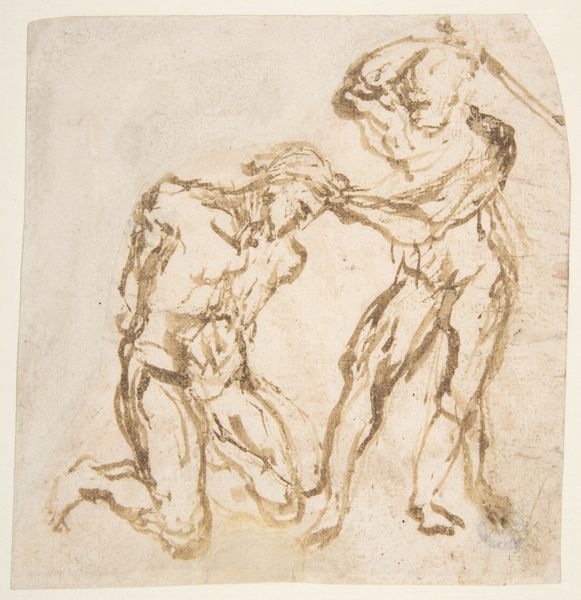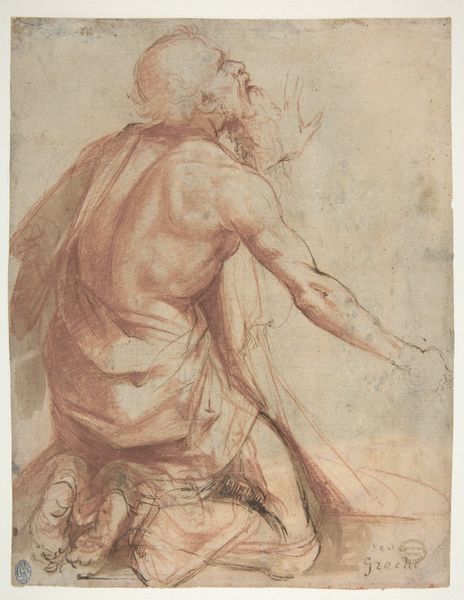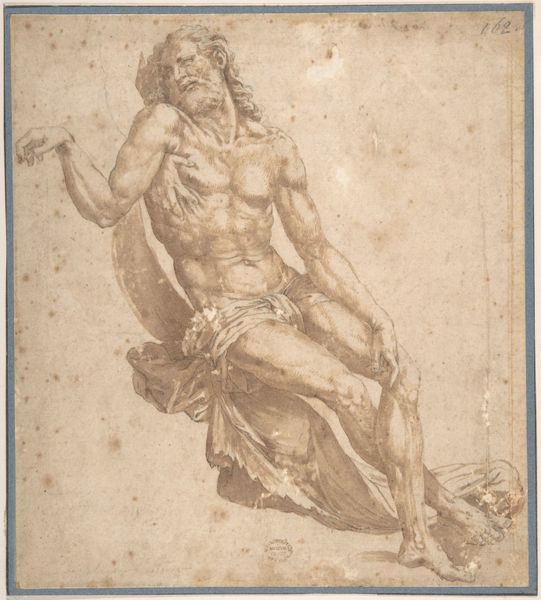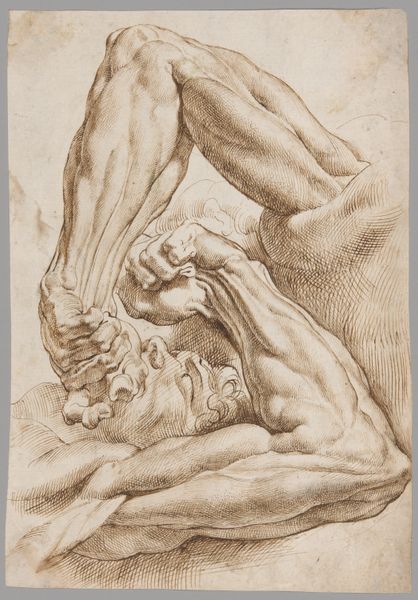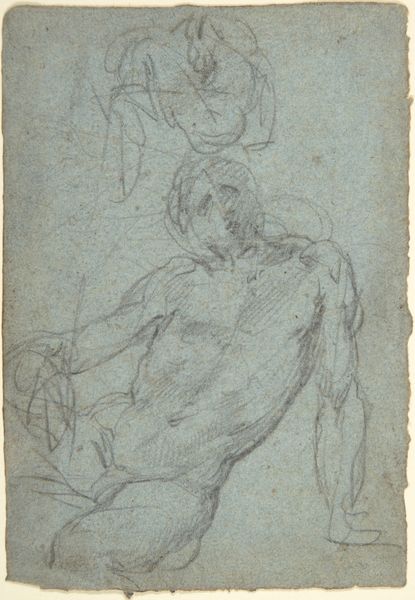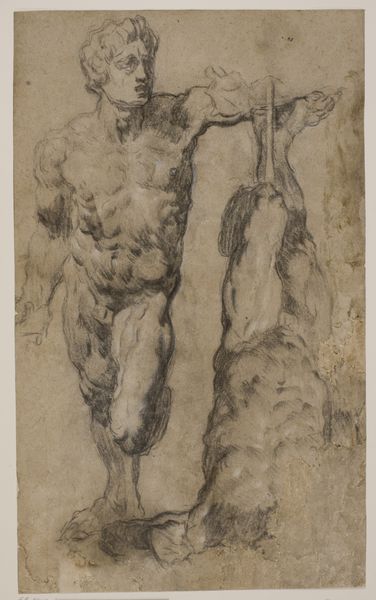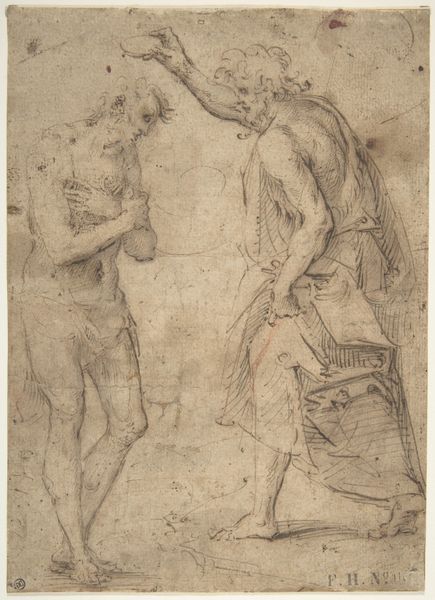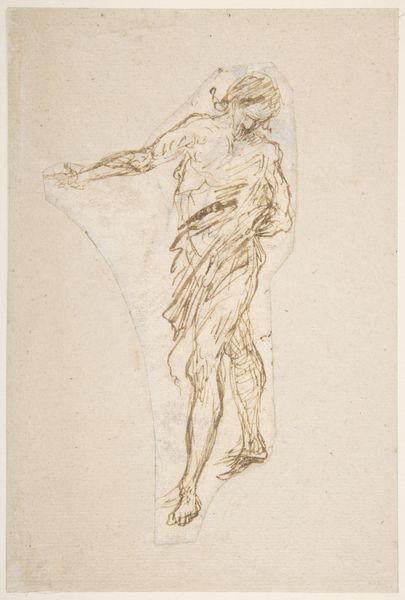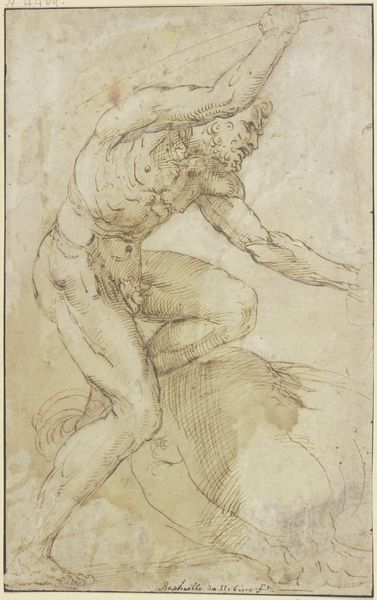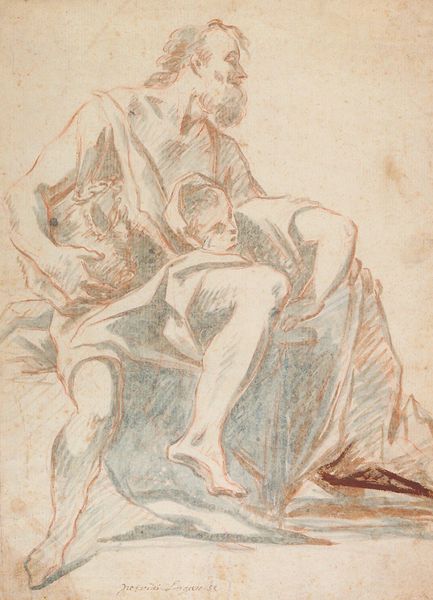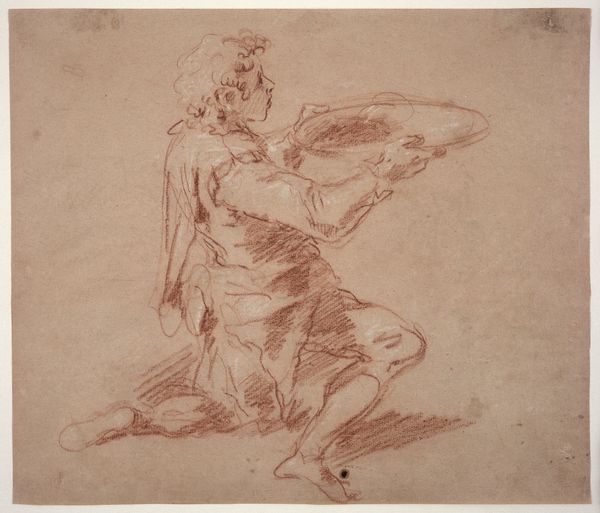
Two studies of a Standing Man with a Sword (Alexander the Great); verso: Studies of a Leg, an Arm, a Hand, and a Figure's Neck 1601
0:00
0:00
drawing, print, ink, charcoal
#
portrait
#
drawing
#
ink painting
# print
#
charcoal drawing
#
mannerism
#
figuration
#
ink
#
charcoal
#
history-painting
Dimensions: Sheet: 7 1/2 × 6 1/2 in. (19 × 16.5 cm)
Copyright: Public Domain
Curator: Here we have a drawing from around 1601, "Two studies of a Standing Man with a Sword" by Peter Candid. The work is currently held in the collection of the Metropolitan Museum of Art. It’s done in ink and charcoal. The verso contains further sketches. Editor: My initial impression is one of dynamism; a sketch of action and muscular tension, albeit an unfinished one. The reddish-brown paper creates a rather warm atmosphere, doesn't it? Curator: The lines certainly suggest movement. Candid uses hatching and cross-hatching to define form, creating depth, though inconsistently applied across the whole work, naturally. Editor: Right, especially in the figure to the left. We should consider how masculinity is represented here. Alexander the Great was not just a military leader but a figurehead for projecting ideals of virility and power, wouldn't you agree? It seems that is Peter Candid's interest. Curator: Peter Candid was an artist known for his skill in rendering the human form in dynamic poses, as reflected in the twisting contrapposto here. There’s an elegance in his anatomical studies, the way he uses light and shadow, it exemplifies a high-mannerist style. Editor: Yes, the pose, it projects strength, and, to be fair, it's clearly influenced by classical antiquity and its reinvention in the Italian Renaissance. Yet, how much does that classical portrayal erase the true diversity of gender expression and body types present at the time and now? This romanticized ideal feels very narrow and perhaps reinforces hegemonic standards, if we analyze Alexander’s legacy. Curator: While your point is very relevant, let us focus on the quality of line and the masterful rendering of the body, Peter Candid understood anatomy and the effects of movement, creating images meant to be more than just historically contextual. He invites the observer to study them purely on an aesthetic level. Editor: Fair enough, seeing both levels enriches our experience; thanks to your formal analysis and historical background we understand much better how artistic language serves for broader historical analysis. Curator: And thanks to you, we see how historic power narratives still carry on within aesthetics.
Comments
No comments
Be the first to comment and join the conversation on the ultimate creative platform.
